When he’s sent to live with the Ojibwe mother he’s never met, Collin discovers a world of magic, a new friend, and a way to finally feel brave.
“The Brave” by James Bird follows Collin, a 12-year-old boy with OCD who compulsively counts letters in spoken words and announces the numbers aloud. After being bullied at multiple schools, Collin’s alcoholic father sends him to live with his Ojibwe mother on the Fond du Lac Reservation in Minnesota—a mother he’s never met. There, Collin finds unexpected acceptance and meets Orenda, a remarkable girl who lives in a treehouse and believes she’s transforming into a butterfly. As Collin navigates his new life, he learns about his heritage, develops his first romantic feelings, and discovers inner strength when Orenda’s illness (ALS) worsens. The novel weaves together themes of belonging, cultural identity, and finding courage in difficult circumstances.
This book offers valuable connections to SDG 10 (Reduced Inequalities) through its exploration of cultural identity, discrimination, and social inclusion. Students can examine how Collin experiences both exclusion in his California life and inclusion within the reservation community. Collin becomes a risk-taker as he adapts to a completely new environment, confronts stereotypes (including his own), and develops resilience through relationships. For classroom use, consider pairing reading with discussions about neurodiversity and cultural stereotyping. Students might create character maps tracking Collin’s growth as a risk-taker or analyze how communities can promote inclusion. Note that while the book has received praise for its emotional depth, some Native American reviewers have criticized its portrayal of reservation life, making it an opportunity to discuss representation and authenticity with older students.

